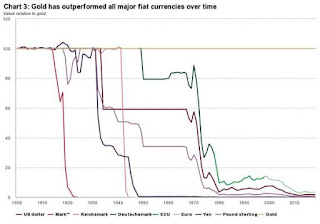Gold as a strategic asset
The
relevance of gold
is
no one’s liability
Recently
the World Gold Council has published, The relevance of gold as a strategic
asset (2019), from investment perspective. That says gold is a highly liquid
yet scarce asset, and it is no one’s liability. It is bought as a luxury good
as much as an investment. As such, gold can play four fundamental roles in a
portfolio, 1: a source of
long-term returns, 2: a diversifier that can mitigate losses in times of market
stress, 3: a liquid asset with no credit risk that has outperformed fiat
currencies & 4: a means to enhance overall portfolio performance.
Our
analysis shows that adding 2%, 5% or 10% in gold over the past decade to the
average pension fund portfolio would have resulted in higher risk-adjusted
returns.
The
WGC says, Gold is becoming more mainstream. Since 2001, investment demand for
gold worldwide has grown, on average, 15% per year. This has been driven in
part by the advent of new ways to access the market, such as physical
gold-backed exchange-traded funds (ETFs), but also by the expansion of the
middle class in Asia and a renewed focus on effective risk management following
the 2008–2009 financial crisis in the US and Europe.
Today,
gold is more relevant than ever for institutional investors. While central
banks in developed markets are moving to normalise monetary policies – leading
to higher interest rates – we believe that investors may still feel the effects
of quantitative easing and the prolonged period of low interest rates for years
to come.
These
policies may have fundamentally altered what it means to manage portfolio risk
and could extend the time needed to meet investment objectives.
In
response, institutional investors have embraced alternatives to traditional
assets such as stocks and bonds. The share of non-traditional assets among
global pension funds has increased from 15% in 2007 to 25% in 2017. And in the US
this figure is close to 30%.
Many
investors are drawn to gold’s role as a diversifier – due to its low
correlation to most mainstream assets – and as a hedge against systemic risk
and strong stock market pullbacks. Some use it as a store of wealth and as an
inflation and currency hedge.






Comments
Post a Comment